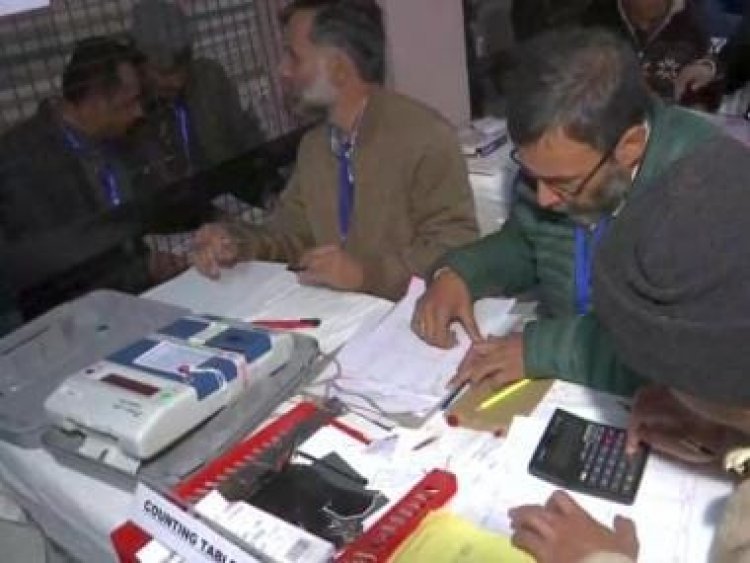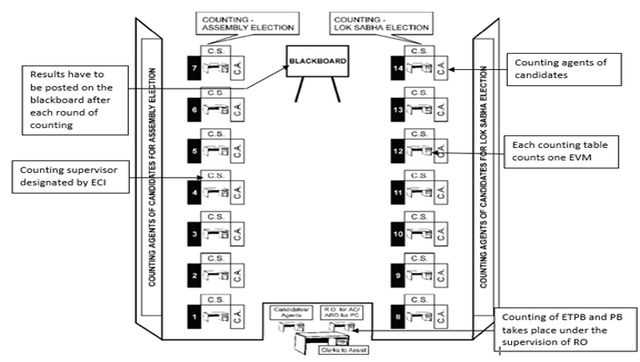Explained: How votes are counted for the Gujarat and Himachal Pradesh Assembly elections
Explained: How votes are counted for the Gujarat and Himachal Pradesh Assembly elections

Everywhere you look today and there will be one news report dominating it all: the counting of votes for the Gujarat Assembly and Himachal Pradesh Assembly.
Given the sheer number of votes polled, counting them isn’t an easy task and managing the voting and counting process has become an extremely complex affair, as the system has to be foolproof that provides least opportunities to any political party or ruling dispensation to subvert the system to its advantage.
As the country looks on at the results for the state of Gujarat — where the Bharatiya Janata Party (BJP) is seeking for a record seventh term — and Himachal Pradesh — the saffron party hopes to break the tradition here too — here’s a better understanding of the process of counting votes and how the results are announced.
- Catch all the live updates from the Gujarat and Himachal Pradesh counting
Who counts the votes?
Counting of votes is a multi-tiered process and has number of people involved. To carry out this complex procedure, the Election Commission appoints a Returning Officer (RO). This person is responsible for conducting elections in a constituency and the responsibility of counting votes also falls on him or her.
The RO is typically an official of the government or a local authority nominated by the EC for each constituency in consultation with the state government.
With respect to counting of votes, the RO doesn’t personally count each vote, but verifies the counting at multiple stages and announces the results. They are the final authority in the matter.
They are assisted in the process of vote-counting by Assistant Returning Officers.
The Election Commission also deploys one additional officer of central government or central PSU as a micro-observer at each counting table to prevent any potential manipulation by state machinery.
In addition to the RO, ARO, each table in a counting room will have a counting supervisor and up to two assistants who do the actual counting. They receive specific training for the task; those tasked with counting postal ballots receive a different training than those counting EVM votes.
The candidates on the ballot are also allowed in the counting room along with their representatives. All parties send their own counting agents to ensure that votes are counted fairly and as per procedure. These representatives have to follow the EC’s code as prescribed in the Handbook for Counting Agents.
Where are the votes counted?
The RO decides on the location where the votes will be counted for a particular constituency. In most cases, the counting of votes for a constituency takes place within a single hall. In each round of counting, votes from 14 EVMs are counted.

Counting centres are housed in walled accommodation with strict security requirements. Government school and college buildings are commonly used.
What is the counting process?
Now, that the RO has been appointed and the location has been decided, come D-Day, the process of counting begins at 8 am.
The first step in this process is the counting of the postal ballots. The officials sort out valid and rejected papers, count them and keep them safe. Counting of votes recorded in EVMs can start half an hour after the start of counting for postal ballots. At the end of each round of counting, the results from the tallying of votes from the 14 EVMs are announced.
Once the votes are counted, the counting supervisor records the number of votes in part II – Result of Counting of Form 17C. If there is no discrepancy after completing Part II of Form 17C, the officer signs the form, gets it countersigned by the candidate or his representative and then hands it over to the RO. The RO then countersigns the form and hands it over to the officer that is compiling the result sheet in Form 20.
The entire process is video-graphed.
What about the VVPAT verification?
As per a 2019 Supreme Court order, the EC is required to match the EVM tallies with Voter verifiable paper audit trail (VVPAT) numbers in five randomly selected polling stations in each constituency.
This verification takes place inside a secure VVPAT counting booth inside the counting hall and requires the direct supervision of the RO or ARO. The RO can declare the final result for the constituency after the VVPAT matching process has been completed.
Now, that the long, complex process has been decoded, enjoy Counting Day and watch how the results unfold. Will it be another Lotus Bloom or is there a surprise in store?
With inputs from agencies
Read all the Latest News, Trending News, Cricket News, Bollywood News,
India News and Entertainment News here. Follow us on Facebook, Twitter and Instagram.
What's Your Reaction?



























































